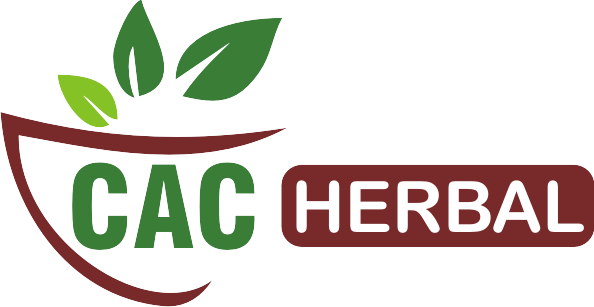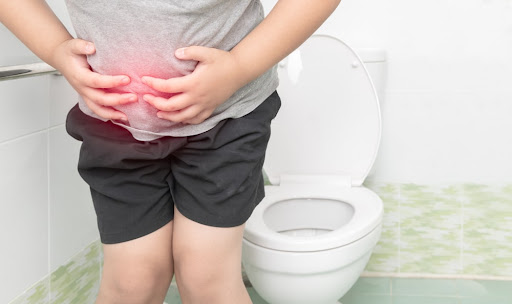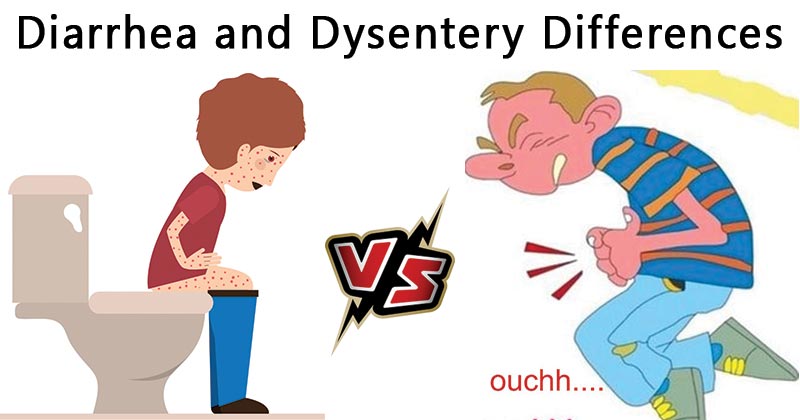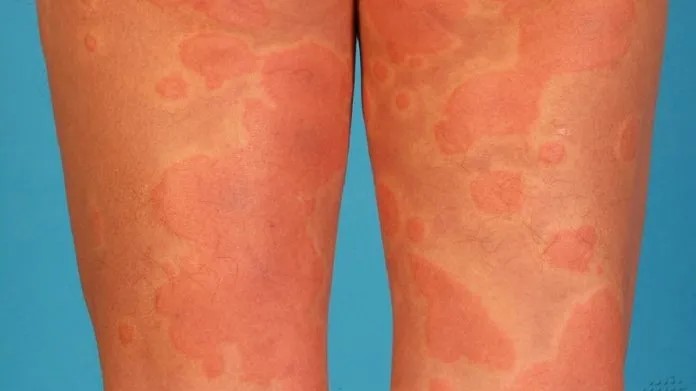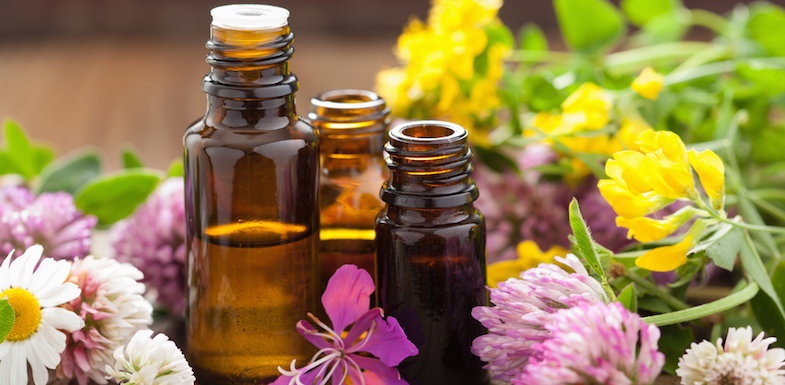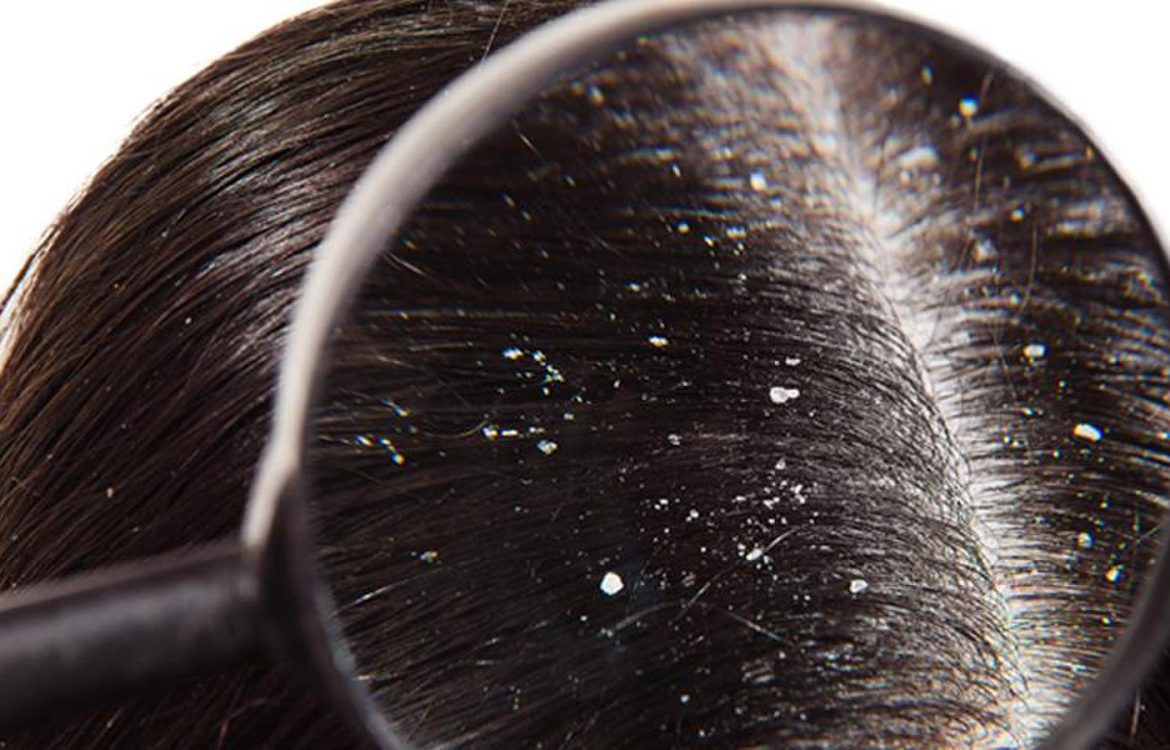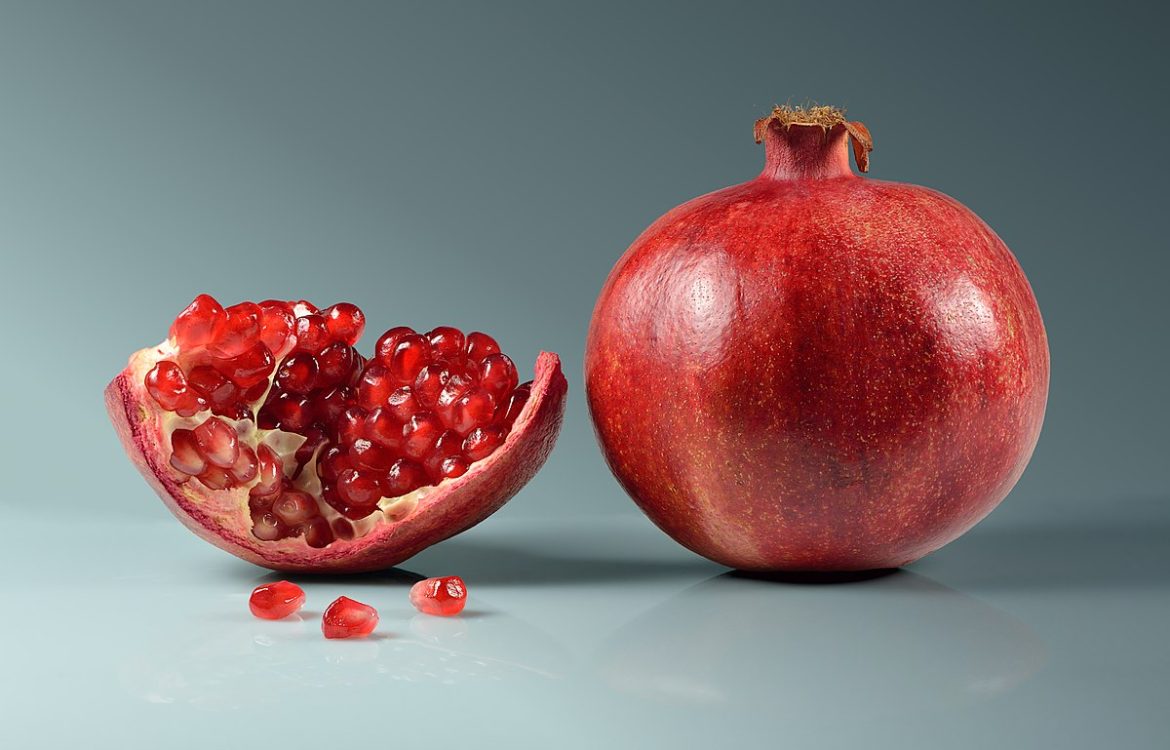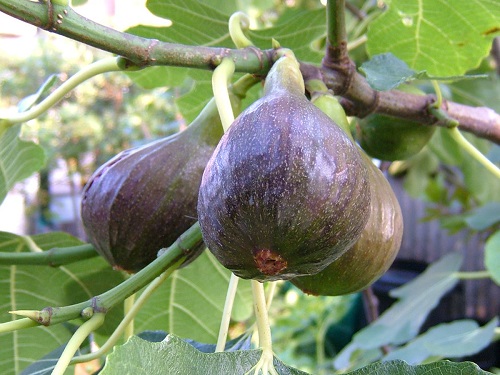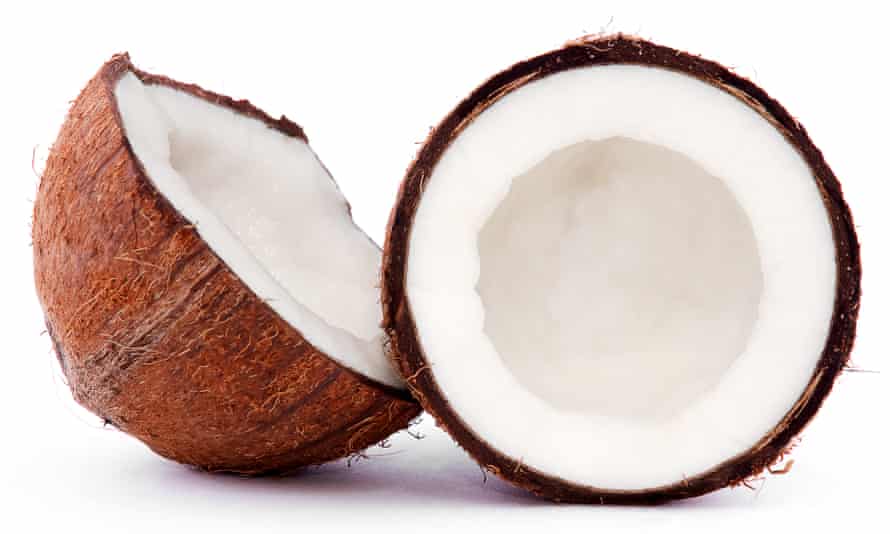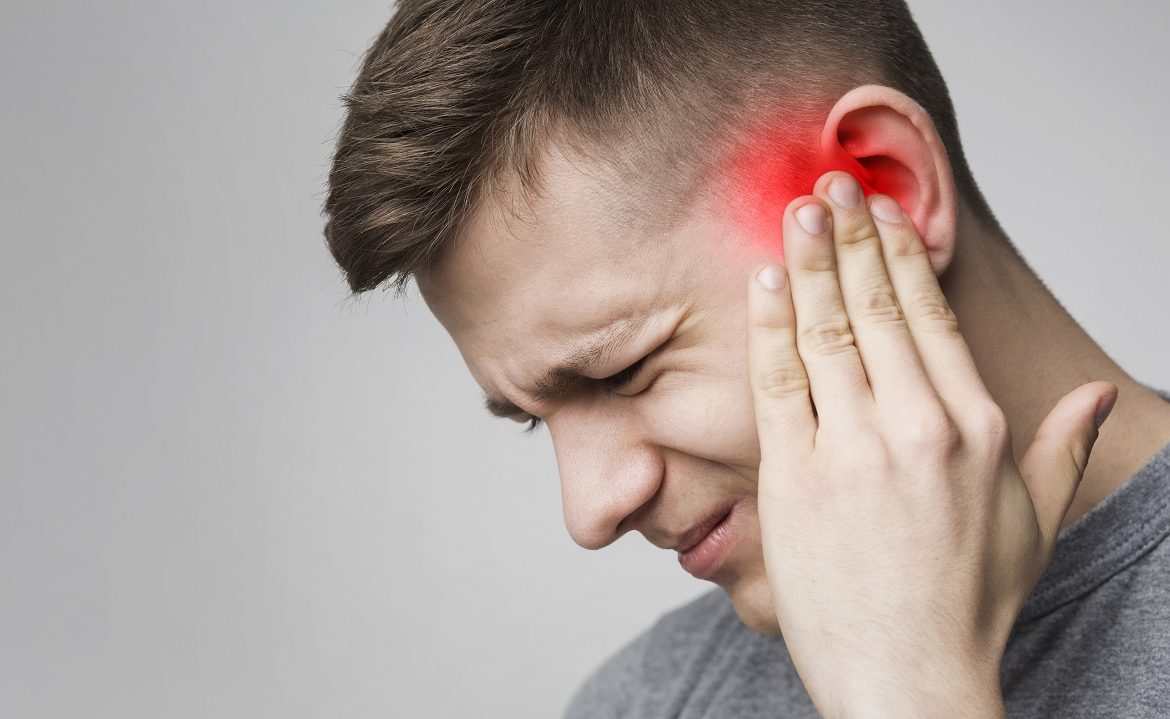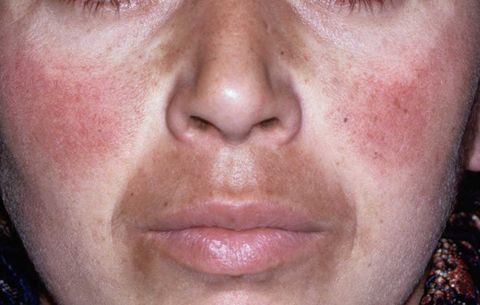Author Archives: admin
REMIDIES FOR CONSTIPATION
- 13 Sep, 2021
- Posted by admin
- 0 Comment(s)
-
DRINKING MORE WATER
Dehydration is one of the most common causes of constipation staying hydrated is one of the simplest natural remedies for constipation.
-
EAT MORE FIBRE
Consumption of rich fiber food in your meal is the best remedy for constipation. The consumption of insoluble fiber is known to increase the bulk and consistency of bowel movements. This remedy makes them easier to pass through the digestive system and is one of the most effective home remedies for constipation.
-
ANJEER
Anjeer provides instant constipation relief when soaked in warm water at night and eat in the early morning. It has high fiber content and is highly recommended. Anjeer is the best home remedy for kids with constipation and it can also improve the digestive system.
-
MILK AND GHEE
Milk and ghee are effective home remedies for constipation. Take 1 or 2 teaspoons of ghee in a hot cup of milk at night during bedtime. This is an effective and natural way to get rid of constipation.
-
LEMON WATER
Lemon juice contains citric acid that helps stimulate your digestive system and can flush out toxins from the body. It is very helpful and acts as natural constipation relief. Take a glass of water and squeeze the fresh lemon juice into it and have it every morning. Also, adding lemon to your tea is an ideal home remedy for constipation and improves digestion.
-
GINGER TEA
Ginger tea is one of the ideal remedies to cure constipation. Ginger is known to be an herb that generates more heat inside the body. The hot ginger tea also helps stimulate digestion and it may give instant constipation relief as well.
-
COFFEE
Grabbing a hot cup of coffee acts as a quick remedy for constipation. It may stimulate the colon and speed up your trip to the bathroom.
-
DALIA
Dalia is a rich source of plant protein and contains important vitamins that might help get rid of constipation. It is known as cracked wheat and is a great source of magnesium as well. Take the right amount of magnesium in a daily diet is one of the natural ways to relieve constipation.
-
HEALTHY FAT
Foods that contain healthy fats are essential for basic body functions also help in intestine lubrication and offer natural constipation relief. People include foods like nuts, olive oil, and avocados in their daily diet to prevent constipation.
-
SESAME SEED
Sesame seed proves to be extremely helpful as it may ease the passing of dry stools because it has an oily composition that works on the intestine and helps to moisture them.
-
MULETHI
Mulethi is most effective that might help to improve digestion. Just take a teaspoon of liquorice root and add a teaspoon of jaggery to it and just drink it with a cup of warm water. It is known promote bowel activity and is widely considered to be one of the best herbs for constipation.
-
RAISINS
Raisins contain tartaric acid and have a high fiber content as well. Raisins can have a laxative effect and might act as a quick remedy for constipation.
-
RHUBARB
When we talk about herbal remedies for constipation. Rhubarb have a laxative effect and prevent constipation. This vegetable proves its effectiveness regarding constipation. It is known for its sour taste and is usually cooked with sugar.
-
BANANA
Banana is the ideal instant home remedy for constipation. Ripe bananas are very helpful and give immediate constipation relief. These are a good source of fiber and are known to improve digestion as well.
-
REGULAR EXERCISE
Most people ignore the importance of regular exercise. Physical movements are known to help move food through your bowels more quickly. So, going for a walk or run may actually stimulate muscles in the intestines and colons. Making this a part of your daily routine might give free and effective constipation treatment at home.
Dysentery (Parvahika)
- 13 Sep, 2021
- Posted by admin
- 0 Comment(s)
Dysentery is agonizing intestinal contamination that is normally brought about by microbes or parasites. Looseness of the bowels is characterized as the runs in which there is blood, discharge, and mucous, typically joined by stomach torment. It generally goes on for 3 to 7 days.
As indicated by Ayurveda, it tends to be related to the infection Pravahika which shows as Atipravahana of Purisha (rehashed crap), Atidrava Purisha Pravritti (watery stool), Udarashoola (torment midsection), Picchila, Saphena (tacky and foamy), and Raktayukta Purisha.
There are two primary types of dysentery:
The first type, amoebic diarrhea or intestinal amoebiasis, is brought about by a solitary celled, tiny parasite living in the enormous entrail.
The second type of, bacillary dysentery, is brought about by obtrusive microbes. The two types of looseness of the bowels happen for the most part in hot nations. Helpless cleanliness and sterilization increment the danger of diarrhea by spreading the parasite or microbes that reason it through food or water debased from tainted human excrement.
Samprapti (Pathogenesis) of Parvahika
Aggrivated vata dosha drag accumulated kapha from amashya
↓
Bring into pakvashya
↓
Due to Ruksha and khar guna of vata & snigdha guna of kledka kapha
↓
Obstruction is created
↓
Kapha adhers wall of pakvashya internally
↓
This process is called as Pravahika
Causes of Dysentery
Shigellosis and amebic loose bowels commonly result from helpless disinfection. This alludes to conditions where individuals who don’t have looseness of the bowels come into contact with fecal matter from individuals who do have diarrhea.
This contact might be through:
- Contaminated food
- Contaminated water and different beverages
- Poor hand washing by contaminated individuals
- Swimming in contaminaed water, like lakes or pools
- Physical contact
Kids are most in danger of shigellosis; however anybody can get it at whatever stage in life. It’s effectively spread through individual to-individual contact and by sullied food and drink.
Shigellosis generally spreads among individuals who are in close contact with a tainted individual, like individuals:
- At home
- In day care focuses
- In schools
- In nursing homes
Amebic diarrhea is fundamentally spread by eating sullied food or drinking defiled water in tropical territories that have helpless sterilization.
Symptoms of Dysentery
- Stomach torment and squeezing
- Loose bowels
- Loss of hunger
- High fever that is 100 degrees or more
- Extreme stomach torment regardless of whether contacted tenderly
- Stomach Bloating
- A frantic sensation of continually passing stools
- Weight reduction; and An extreme migraine
Management of Dysentery
Prevention
- The danger of this issue in poor clean conditions can be brought down by:
- Drinking just filtered water or water that has been bubbled for in any event 1 moment
- Drinking different liquids (like pop) from fixed jars or containers
- Not adding ice shapes to drinks
- Not eating unpeeled products of the soil
- Not eating or drinking unpasteurized milk, cheddar, or dairy items
- Not eating food sources or beverages sold by road merchants
- Washing hands frequently with cleanser and water or utilizing hand sanitizer
Urticaria (Sheetpitta)
- 13 Sep, 2021
- Posted by admin
- 0 Comment(s)
Urticaria is portrayed by irritated weals (hives), with or without encompassing erythematous flares.
A weal (or wheal) is a shallow skin-shaded or fair skin expanding, normally encompassed by erythema that keeps going anything from a couple of moments to 24 hours. Urticaria can exist together with angioedema which is a more profound expanding inside the skin or mucous layers.
In ayurveda Urticaria is also called as Sheetpita. Sheetpita is one among the Twak Vikara that have related Hetu of Kotha and Udarda. Vata and Kapha are two “Doshas”, which are principally disturbed which thusly is related through Pitta bringing about Tridosha Prakopa causing to redness, expanding tingling on the skin and so forth.
Sheetpita as per Ayurvedic science is a Tridoshaja vyadhi. At first after Nidaan sevan (etiological factors) vitiation of Kapha and Vata takes place then they begin to fan out in entire body both remotely and inside by blending in with Pitta. The Tridoshas travelling inside causes Dushti(pathogenesis) of rasa and Rakta dhatus after that Rasavaha and Raktavaha Srotodushti happens these on coming to Viguna twak(sensitized skin) produce side effects like Toda, Daha, Kandu, and so forth
Samprapti of Sheetpita
Prakupita Vata and Kapha
↓
Due to ‘Sheeta Marutadi Nidana (Sheeta Maruta Samsparshat)
↓
When being mixed with ‘Pitta’ (Pittena Saha Sambhooya)
↓
Spreads internally and externally (bahir-antah visarpatah)
↓
Results in to Sheetapitta
Urticaria happens when the body responds to an allergen and deliveries histamine and different synthetic substances from under the outside of the skin.
The histamine and synthetic substances cause aggravation and liquid to collect under the skin, causing wheals.
Instances of realized triggers include:
- Prescriptions, including a few anti-toxins and non-steroidal calming drugs (NSAIDs, for example, headache medicine and ACE inhibitors, utilized for hypertension
- Food sources, such nuts, shellfish, food added substances, eggs, strawberries, and wheat items
- Contaminations, including flu, the normal chilly, glandular fever, and hepatitis B
- Bacterial diseases, including urinary lot contaminations and strep throat
- Intestinal parasites
- Outrageous temperatures or changes in temperature
- High internal heat level
- Pet dander from canines, felines, ponies, etc
- Dust vermin
- Cockroaches and cockroach squander
- Latex ,dust
- A few plants, including brambles, poison ivy, and toxic substance oak
- Bug nibbles and stings
- A few synthetic substances
- Constant ailment, like thyroid illness or lupus
- Daylight openness
- Water on the skin
- Scratching
Symptoms of Urticaria
Signs and symptoms of persistent hives include:
- Groups of red or skin-hued welts (wheals), which can show up anyplace on the body
- Welts that differ in size, change shape, and show up and blur over and again as the response runs its course
- Tingling, this might be extreme
- Excruciating expanding (angioedema) of the lips, eyelids and inside the throat
- An inclination for signs and manifestations to erupt with triggers like warmth, exercise and stress
- An inclination for signs and indications to persevere for over about a month and a half and to repeat as often as possible and unusually, now and then for quite a long time or years
AYURVEDIC TREATMENT OF URTICARIA
Our treatment plan ought to be with the end goal that-
- Vata pradhan Tridoshamaak.
- That sanitizes Rasa rakta dhatus.
- Helps in boosting safe framework as autoimmunity assumes a significant part in its pathogenesis.
Our Acharyas have referenced millennia prior about different natural details and Panchakarma methodology for Sheetpitta or Urticaria.
Panchakarma methods incorporate
- Vamana-Since it’s a Kaphaj prevailing infection, Vamana place a vital job in adjusting Kapha Dosha. Vitiated Kapaha is taken out from body through purgation technique.
- Virechana-Vata and Kapha are related with vitiated pitta in Blood . Along these lines, Pitta dosha is offset with Virechana treatment.
- Raktmokshana: Since it is the best method to eliminate poisons from the body straightforwardly through blood, it shows wonderful outcomes even after first sitting. Polluted blood is delivered from the body through Sira Vedhan methodology. It’s an easy system and barely takes 10 mins however gives superb outcomes.
- Lepam: Medicated oils like Nalpamradi tailam, jeevantyadi tailam, Urtiplex cream and so forth are applied locally on the skin. Additionally, Herbal glue are applied on the skin like Anantmool Lepam, Sariva Lepam, Chandan Lepam and so forth
- Oral Herbal Medication: Oral Medication assumes a vital part in Ayurvedic treatment of Urticaria. Doorva Churna, Panchatikt ghrit guggulu, haridrakhand, aarogyavardhani and so on are a portion of the referenced medications for Urticaria treatment in Ayurveda.
Do’s and Don’ts:
- Avoid from acrid, pungent and zesty food, cheap food, garbage food.
- Curd, pickle
- Inordinate voyaging
- Employments of A.C.
- Wear full sleeves dress.
- Keep away from Humid climate
- Late evening dozing propensity.
FIVE ESSENTIAL OILS FOR HEADACHE
- 13 Sep, 2021
- Posted by admin
- 0 Comment(s)
In Ayurveda, Head or Shira is considered as the Uttamanga because it is the seat of prana and indriyas. In Ayurveda “Headache” is termed as “Shiroshoola”.
HEADACHE– It is a painful sensation in any part of the head; the pain ranges from sharp to dull and may be present with other symptoms.
COMMON CAUSES-
The most common causes of Shiroshoola or headache are-
- Lack of sleep
- An incorrect eyeglass prescription
- Stress
- Loud noise exposure
- Wearing a tight head wear.
- Poor posture
- Skipping of meals
- Changes in sleep
- Excessive Intake of alcohol particularly red wine.
- Hunger
- Weather Changes etc.
Essential oils for headache-
The following oils have proved to be beneficial for relieving Headache.
1. LAVENDER OIL
- BOTANICAL NAME OF LAVANDER- Lavandula angustifolia
- This oil is mostly used for getting sleep in case of Insomnia, reduces stress, anxiety or depression.
- It is believed that it can help in relieving headaches and migraines associated with stress.
- Inhalation of lavender essential oil that can be a safe and effective treatment to manage migraine headaches.
2. ROSEMARY OIL
BOTANICAL NAME OF ROSEMARY- Rosmarinus officinalis
FAMILY- Lamiaceae
This oil is traditionally used to treat headaches and improves circulation.
This oil has an anti-inflammatory and pain-killing property.
It is found that rosemary oil helped to reduce pain and insomnia in people going through opium withdrawal treatment.
It may reduce the pain associated with a headache.
3. PEPPERMINT OIL
BOTANICAL NAME OF PEPPERMINT- Mentha piperita
FAMILY- LAMIACEAE- “The mint family”
This oil has been used in alternative medicines from ancient period of time. It is one of the most popular essential oils for treating headaches.
Apply peppermint oil to the temporal region and forehead provides relief from tension headaches.
The active ingredient present in peppermint oil is menthol. It may be effective in treating migraines when applied to the head as a gel.
4. CHAMOMILE OIL
BOTANICAL NAME OF CHAMOMILE- Matricaria chamomilla
Family- Asteraceae
The Shiroshoola is often caused by stress and anxiety; the chamomile oil may help to treat headaches.
Drink chamomile tea to relax and unwind. The oil of Chamomile is commonly believed to have a similar effect.
This Oil might improve some of the symptoms of Anxiety, stress and depression.
There are anti-inflammatory properties in chamomile that may reduce a headache.
5. EUCALYPTUS OIL
BOTANICAL NAME OF EUCALYPTUS- EUCALYPTUS GLOBULUS
FAMILY- Myrtaceae (Myrtle Family)
It is used traditionally to clear sinuses and reduces the inflammation. Some headache may be due to blocked sinuses, Inhalation eucalyptus oil may help to reduce these symptoms.
According to some studies, eucalyptus oil was effective for relieving pain and lowering the Blood pressure when it was inhaled.
HOW TO USE THESE ESSENTIAL OILS??
- As per Ayurveda, The oils possesses Vata balancing properties, it pacifies the vata dosha and provide relief against Shiroshoola which is caused mainly by the Vata Dosha.
- Mode of Application- Apply oil to the temples or forehead region. These oils need to be diluted with carrier oil, such as coconut oil, before the application to the skin. After diluting, the oil can be massaged into the temples and across the forehead.
- Inhalation of oil– These oils can be inhaled by adding a few drops to a tissue, holding the tissue under the nose and breathing deeply.
- Using a compress- You can make a compress by soaking the towel in cold water with a few drops of essential oil. Apply this compress to the forehead or neck.
- Add on for Bath- Add a few drops of essential oil to a hot bath make you feel relaxes and it is an amazing way to treat a headache.
DANDRUFF CAUSES AND HERBAL REMEDIES
- 11 Sep, 2021
- Posted by admin
- 0 Comment(s)
INTRODUCTION
Dandruff is commonly a scalp disorder that causes flakes of dead skin from the scalp appear in the hair. . The scalp skin dies and flake off and gets pile up with oil and dirt blocking the pores and causing itching . If left untreated, dandruff can weaken the hair root and causes hair loss and hair thinning it affecting almost half of the population. It is common and non-contagious (you cannot sometimes does not cause long term harm but it can be uncomfortable to live with and causes person embarrassment.
CAUSES OF DANDRUFF
Numerous factors can lead to formation of flaky dandruff on the scalp and these include
- IRRITATED OILY SKIN
- Not shampooing enough
- Dry skin.
- Sensitivity to hair care products.
- Hyperactivity of sweat glands
- Environmental factors such as dust and sunlight
- Stress and anxiety
- Hormone imbalance.
- Excess hair conditioning and coloring.
- Psoriasis and eczema
- Alcohol consumption.
- 12 .Nutrient deficiency.
SIGNS AND SYMPTOMS
- Itchy head
- Tingly head
- Dry scalp
- Head may feel sore
- Presence of white flakes on scalp and hair
- Dryness
- Redness and irritation on the scalp
- Continuous itchy feeling on the scalp
- Hair loss and thinning
CAUSES OF DANDRUFF IN AYURVEDA
Dandruff is due to an imbalance of all three doshas (VATA, PITA, and KAPHA). The primary doshas involved are Pitta and Vata
LINE OF TRETEMENT IN AYURVEDA
Ayurveda treatment for dandruff and hair care therapy includes :-
Bringing in balance of two doshas Pitta and Vat Aggravation of any of these doshas can result in accumulation of toxins and impurities in the deep tissues of scalp and these doshas pollute them causing itching and patches on scalp.
The treatment plan includes stabilization of Pitta and Vat doshas . Topical Ayurveda herbal solution and oil relieve from itching and internal medicines help you improve scalp immunity through detoxification and nourishment of your scalp.
Special herbs are used help to produce hair growth that stimulate the hair follicles to grow new hair and remove the impurities from the scalp.
In Diet you may avoid spicy, hot foods and add high nutritive fiber-rich foods, salads, fruits. Diet include antioxidant foods like green tea, almonds, walnuts; plenty of green leafy vegetables. Wash your hair regularly and massaging the scalp using herbal oils and solutions that prevent the accumulation of dead scalp cells and prevent the occurrence of dandruff again . Minimizing stress and anxiety level help to maintain system
HOME REMEDIES FOR DANDRUFF
1. Coconut Oil with Lemon:
Coconut oil nourished your hair and when this is mixed with lemon juice, it can cure dandruff.
Preparation of Coconut Oil with Lemon:
Firstly you need to heat 2 tablespoons of coconut oil and mix it equally with some mixture of lemon juice.
Once this is done, you can apply this on your scalp and massage your hair gently with it.
After this is done, leave it for 20 minutes and then rinse it off with some shampoo.
2. Apply Mehdi:
You can cure dandruff using Mehdi. Mehdi works as a hair softener and conditioner.
Preparation of Mehdi: the paste is formed; keep the mixture aside for 8 hours.
After Mix Mehdi with curd and a little bit of lemon juice.
Once 8 hours you can apply it on your hair
Let it dry for two hours and then you can wash it away.
3. CURD
Curd helps to make you hairs soft and also effective to cure dandruff.
Preparation of curd to cure dandruff include :-
apply curd onto your hair including your scalp.
Let it dry for an hour.
After an hour wash your hair with shampoo.
4. EGG YOLK
Egg yolk contains biotin which is the vitamin works as a moisturizer treats dandruff. Egg yolks also act as conditioners in natural way hydrating scalp and preventing dryness.
Preparation of Egg Yolk:
Applying the yolk on your hairs and cover your hair with a for an hour.
AFTER an hour wash your hair using shampoo. If any odor left wag again with shampoo.
5. Apply Aloe Vera
The antibacterial and antifungal properties of aloe Vera could help you to protect you against dandruff.
6. Fenugreek Seeds
Fenugreek seeds also known as meth seed. It promotes hair growth and improve hair texture when used regularly.
Preparation of Fenugreek Seeds:
Take some fenugreek seeds in a bowl of water and let it soak overnight.
In morning mash the seeds to a paste-like substance and then add little lemon juice to the paste and mix it well and apply to scalp.
Once the paste formed, apply it onto your scalp and hair and leave it to dry for 30 minutes.
After this you can wash your hair with shampoo and allow your hair to dry.
Preparation of Mehdi:
Mix Mehdi with curd and a little bit of lemon juice.
Once the paste is formed, keep the mixture aside for 6 hours.
After 6 hours you can apply it on your hair
Let it dry for 2 to 3 hours and then you can wash it away with shampoo .
POMEGRANATE HEALTH BENEFITS
- 11 Sep, 2021
- Posted by admin
- 0 Comment(s)
DESCRIPTION
Pomegranate is known as Anar in Hindi and Pomegranate is a treasure of nutrients, known as “Dadima” in Ayurveda that has been used for its numerous health benefits for centuries. Pomegranate considered a “blood purifier”. Pomegranate has anti-oxidant and anti-inflammatory property it is a commercial crop of India. It is a rich source of carbohydrates, proteins, calcium, phosphorus, iron, and vitamin C. Pomegranate is eaten as fresh fruit also its juice is cool and refreshing. Each and every part of pomegranate has some medicinal value AND use. Its root and peel used to cure diarrhea, dysentery, and worm killing in the intestines. Its petals are used for preparing dyes. Maharashtra is a major producer of Pomegranate. Rajasthan, Karnataka, Gujarat, Tamil Nadu, Andhra Pradesh, Uttar Pradesh, Punjab, and Haryana are also cultivating pomegranate on small scale. It can be grown on a variety of soils for optimum growth and yield.
SCIENTIFIC NAME – Punica granatum
FAMILY – punicaceae
SYNONYMS OF POMEGRANATE –
- Kulekhara,
- Dadima,
- Dadama,
- Anar
- Dalimba
- Matalam,
- Dadimba,
- Madalai,
- Madalam,
- Danimma,
- Rumman,
- Dadimacchada,
- Lohitapuspa,
- Dantabija,
- Dalim,
- Dalimgach,
- Dadam phala
- Dalimbe haonu,
- Madulam Pazham,
- Dadimbakaya
SOURCE OF POMEGRANATE – PLANT BASED
BENEFITS OF POMEGRANATE
- Digestion – Pomegranate juice, when taken on a regular basis, is helpful in relieving digestive problems like diarrhea.
- Heart – It is also beneficial for managing heart problems and high cholesterol as it helps keep the arteries unclogged due to its antioxidant property.
- Coronary obstructive pulmonary disease – Chronic obstructive pulmonary disease is a chronic lung disease that causes difficulty in breathing. According to Ayurveda, COPD is due to an imbalance of the three doshas (Kapha, Vata & Pitta). Regular consumption of Pomegranate helps to reduce symptoms of COPD and balance all the dosha and provide strength to lungs.
- Atherosclerosis – In atherosclerosis there is plaque accumulates inside the arteries, causing them to harden and narrow. According to Ayurveda, there is an accumulation of Ama (toxic remains in the body due to improper digestion) that affects the circulation of blood. This is because Ama is sticky in nature. It clogs the arteries and leading to the hardening of the arterial walls. Using Pomegranate juice or powder helps to reduce Ama due to its pomegranate Deepan (appetizer) Pachan (digestive) properties.
- Coronary artery disease – High cholesterol accumulation due to an imbalance of Pachak Agni (digestive fire). Impaired digestion produces excess waste products or Ama (toxic remains in the body due to improper digestion). This causes the accumulation of bad cholesterol and blockage in the blood vessels or arteries. Pomegranate helps to control high cholesterol because of its property of balancing Agni. It reduces Ama and prevents the build-up of bad cholesterol in the body.
- Diarrhea – Diarrhea known as Atisar in Ayurveda, improper food, impure water, toxins, stress, and Agnimandya (weak digestive fire) all are responsible for aggravating Vata dosha. Intake of Pomegranate helps to control diarrhea because it has Kashaya (astringent) property that retains fluid in the intestine and reduces the frequency of motion.
- Erectile dysfunction – Erectile dysfunction is a sexual problem in males in which erection cannot be maintained for sexual intercourse. In Ayurveda, this condition is known as Klaibya. Generally, the aggravation of Vata dosha is responsible for erectile dysfunction. Pomegranate helps to manage erectile dysfunction and improve sexual performance. This is because of the pomegranate Vajikarana (aphrodisiac) property.
- Fungal infection of a vagina – Pomegranate help to manage vaginal infections. This is due to its antiviral and antibacterial properties. It inhibits the growth of microorganisms such as T. vaginalis that cause vaginal infections.
- Muscle building – Pomegranate might help manage muscle soreness after exercise. Pomegranate contains phytochemicals that have an enhancement performance effect. Pomegranate enhances physical performance and boosts strength.
- Obesity – An increase in weight is due to unhealthy food habits and lifestyle which leads to a weak digestive fire (Agni). This increases the accumulation of Ama causing an imbalance of meda dhatu and resulting in obesity. Pomegranate juice is useful to control obesity as it helps improve metabolism and reduce Ama. This is due to pomegranate Deepan (appetizer) and Pachan (digestive) properties. It balances Meda dhatu and thus reduces obesity.
- Piles – Hemorrhoids are known as Arsh in Ayurveda which is caused by an unhealthy diet and a sedentary lifestyle. This leads to the impairment of all the three doshas (VATA, PITTA, and KAPHA) and mainly Vata dosha. An aggravated Vata dosha causes a low digestive fire, leading to persistent constipation in people. This causes swelling in the veins of the rectum area and leads to hemorrhoids. Regular intake of Pomegranate is useful to manage hemorrhoids. This is because it helps promote Agni (digestive fire) which corrects constipation and reduces the inflammation in hemorrhoids.
- Rheumatoid arthritis – Rheumatoid Arthritis is known as Aamavata in Ayurveda. Amavata is a disease in which aggravation of Vata dosha and accumulation of Ama takes place in the joints. This is due to agnimandheya (weak digestive fire). This Ama is carried to different locations through Vata but instead of being absorbed, it gets accumulated in the joints. Taking Pomegranate on a regular basis helps to control symptoms of rheumatoid arthritis. It reduces Ama due to its Deepan and Pachan properties and gives relief from the symptoms of rheumatoid arthritis.
ANJEER HEALTH BENEFITS
- 11 Sep, 2021
- Posted by admin
- 0 Comment(s)
The anjeer (fig) is a native of the Asia, Middle East, and turkey and widely cultivated in the USA and Spain. Anjeer belongs to mulberry family and scientifically termed as ficus carcia. Figs are superlative sweet fruits with several crunchy seeds. Dried figs are rich in minerals such as calcium, magnesium, copper, potassium and zinc.
Anjeer Ayurvedic Benefits-
It is an extremely sweet and astringent fruit which is hard to digest and has cooling power. According to Ayurveda principles anjeer helps in balancing the pitta and vata doshas. Anjeer have diuretic, laxative and expectorant properties. It is useful in urinary stone problems. In addition, figs are amazingly good for women for regulate the menstrual cycle.
THERAPEUTIC BENEFITS OF ANJEER-
-
Regulate blood pressure-
Excessive amount of sodium in the diet can lead to potassium deficiency, which causes high blood pressure. The profusion of potassium in fig helps in regulating high blood pressure. Richness of fiber in figs can help to flush extra sodium from the system.
-
Treats sexual problems-
Anjeer is a wonder fruit and highly used for treating various dysfunctions such as erectile dysfunction, low stamina and sterility. Anjeer is rich source of vitaminB6, A, calcium, potaccium and magnesium. These minerals increase the semen production. Figs are also useful in adolescent girls to regulate the menstrual cycle and alleviate PMS symptoms. Dried figs are high in amino acids and its work as a good aphrodisiac fruit by increasing vitality and libido.
-
INCREASE DENSITY OF BONES-
Figs are an amazing source of both calcium and potassium. These minerals can helps to improve bone density, which can prevent and treat osteoporosis. The Researchers says that a potassium-rich diet can improve bone health and reduce bone turnover. Calcium is a main component of bones, and increasing calcium intake has been shown to improve bone mineral structure in children and adolescents.
-
Treats piles-
Anjeer has the natural laxative and antispasmodic properties. Figs are used as a traditional remedy for treating hemorrhoids (piles). Due to its laxative property it aids in lowering the pressure on the rectum.
-
Helps in insomnia-
Dry anjeer is more beneficial in sleep disorders. It is a great sleep inducing fruit. The richness of tryptophan enzymes promotes sound sleep by improving blood circulation in the body.
-
Good For skin health-
Wrinkle free skin-
The impressive antioxidant and anti-collagenase properties of anjeer extract is favorable for lessening wrinkles and makes the skin look supple. Moreover, anjeer extract works as a natural remedy for hyperpigmentation, acne and wrinkles it is also improves the skin hydration.
Anjeer essence is used widely in various skin formulations which have proven to reduce the skin melanin, water loss and sebum.
Radiant Skin-
Fresh figs are used in face masks for getting instant glow. Make a paste of fresh figs, gently apply on your face and allow it to stay for 15 -20 minutes and rinse well with lukewarm water, this will make the skin glow naturally and look vibrant. The abundance of nutrients in anjeer such as vitamin, E, A and C and potent antioxidants is highly beneficial to alimentation the skin and rejuvenate skin cells. Even the richness of vitamins, minerals and antioxidants maintain the skin pH balance and promotes blood circulation.
Treats Warts
The latex of the anjeer tree shows an amazing antiwart property. Fig is been used large scale in traditional fruits of the medicine for treating various skin problems like eczema, vitiligo, SLE and psoriasis. The proteolytic activity of latex enzyme aids to remove warts on the body without causing any side effects.
Figs for Hair Health-
Figs are incredibly high on iron, potassium, magnesium and vitamins A and E which play an important role in promoting growth of stronger tresses. Figs extract are impressive formulation used in the beauty industry for strengthening and improving hair moisture, conditions tangled mane, makes the hair frizz- free, look lustrous and strong.
Fig Leaf Tea-
Fig leaf tea is made out of dried fig leaves, these tea varieties are refreshing herbal drink which boosts energy. Ajeer leaf tea also uplifts mood.
Contraindications-
People with pollen allergies should avoid Fig fruits. Fig fruit is generally safe for consumption which does not have any major side effects. However, it may have a least laxative; hence it may induce lax stools or diarrhea if consumed in large quantities
COCONUT HEALTH BENEFITS
- 11 Sep, 2021
- Posted by admin
- 0 Comment(s)
DESCRIPTION
SCIENTIFIC NAME – Cocos nucifera
FAMILY– recaceae
The coconut tree stems from the Southeast Asian (probably Malaysia), but is cultivated in tropical regions all around the world. The slender, leaning, ringed trunk of the coconut rises up to 25 meters (80 feet) from a swollen base and is surrounded by a graceful crown of giant featherlike leaves. Mature fruits are ovoid or ellipsoid in shape, 6–8 inches in diameter, have a thick fibrous husk surrounding the familiar single-seeded nut. A hard shell encloses the insignificant embryo. Most of the world coconuts are produced on small native plantations. Full bearing is obtained in 15 years. Yields continue benefits until trees are about 50 years old. Coconuts are rich in manganese, which is essential for maintaining bone health and metabolism of carbohydrates, proteins, and cholesterol. They are also rich in copper and iron, which help to form red blood cells, an important antioxidant that protects your cells.
COCONUT MILK CONTENT
- Calories: 552g
- Fat: 57 g Saturated fat: 50 g
- Protein: 5.5 g
- Carbohydrates: 13 g
- Fiber: 5 g
- Sugar: 8 g
COCONUT WATER CONTENT
- Calories: 46
- Fat: 0.5 g
- Saturated fat: 0.4 g
- Protein: 2 g
- Carbohydrates: 9 g
- Fiber: 3 g
- Sugar: 6 g
COCONUT OIL CONTENT
- Calories: 121
- Fat: 13 g
- Saturated fat: 11 g
- Protein: 0 g
- Carbohydrates: 0 g
- Fiber: 0 g
- Sugar: 0 g
HOW DOES COCONUT WATER WORKS
Coconut water higher in carbohydrates and electrolytes such as potassium, sodium, and magnesium. The electrolyte composition in coconut water help to treat and prevent dehydration.
COCONUT BENEFITS
COCONUT OIL ON SKIN
It helps to protect and hydrates the skin, reduce dryness and allow your skin to retain moisture. It provides a protective barrier, helping skin from environmental toxins, dirt and other. It smooth’s skin, minimizes fine lines and wrinkles, calms temporary redness, provides antioxidants, absorb easily in the skin and soothes irritated skin.
COCONUT OIL ON HAIR
Coconut oil help in hair growth deep into its follicles. Coconut oil make healthy scalp and fighting against insect bites, lice and dandruff. Coconut oil moisturizes dry hair. Coconut oil provide luster, shine and softness to the hair. Coconut oil prevents hair breakage and split ends, it help to slows down hair loss.
COCONUT ROLE ON DIGESTION
Coconut and its derivatives promote healthy digestion in many ways. Coconut oil has anti-microbial properties that promoting healthy gut. Coconut have its anti-inflammatory properties which can help with disorders such as IBD. Coconut meat is excellent source of fiber, while coconut water promotes hydration and digestion. Coconut have protein that helps to develop immunity to the digestive diseases. Coconut milk has anti-ulcer properties which help to reduce ulcers.
COCONUT ROLE ON WEIGHT LOSS
Coconut water has more minerals as compared to any other fruit juices. Other fruit juices may added or hidden sugar. Coconut water is not just low in calories but also have less sugar as compared to other fruit juices. Consuming coconut water on an empty stomach early in the morning can help you not in one way but many ways. Coconut contains lauric acid that helps in boosting immunity. It helps to fight with dehydration and constipation and relieve morning sickness and heartburn in pregnant women.
COCONUT ROLE ON PREGNANCY
Coconut water during pregnancy help in hydrating and provides electrolytes. It replaces lost electrolytes such as potassium, sodium and magnesium from morning sickness. Coconut water may soothe acid reflux. Coconut water contains small amounts of some minerals, provide macro- and micronutrients needed for fetal and maternal health. Women’s who have high blood pressure during pregnancy coconut water regulating blood flow and blood pressure because potassium present in it which help to regulate the blood pressure.
COCONUT WATER ROLE ON KIDNEY
Coconut water also helps in dissolving kidney stones because of the presence of potassium, which plays a key role in urine alkalizing and preventing the formation of kidney stones.
Ear Pain Symptoms, Herbal Remedies and Prevention to Cure
- 10 Sep, 2021
- Posted by admin
- 0 Comment(s)
Ear pain generally occurs in children, but it can also occur in adults. Ear pain that starts inside the ear is known as primary or 1degree otalgia, whereas pain that begins outside the ear is known as secondary or 2-degree otalgia.
Generally, ear pain can originate gradually or suddenly. The pain can be sharp, dull, and can be temporary or on and off. Usually, the pain feels in only one ear, but sometimes it can occur in both ears.
Karna Roga, according to Ayurveda can be caused by one of four imbalances:
- Vata: Imbalances of Vata can cause thin discharge from the ear, dry ear wax, sharp pain, abnormal sound in the ear (tinnitus), and deafness.
- Pitta: Imbalances of pitta leads to inflammation, yellow discharge, redness, tearing, and burning sensation.
- Kapha: Imbalances of Kapha causes white or slurry discharge, abnormal sound, severe itching, swelling, and mild pain.
- Sannipatataja: This happens when there is an imbalance of all doshas Vata, pitta, and Kapha; the discharge may be colored depending on the predominant dosha.
Signs and Symptoms of Ear Pain can occur with
- Fever
- Drainage from the ear
- Loss of appetite (in children)
- Excessive crying (in children)
- Hearing loss
- Irritability
- Headache
- Difficulty in chewing
- Jaw pain
- Throbbing pain
- Fussiness
Possible causes of ear pain include
- Allergies
- Blockage in Eustachian tube causing a build-up in pressure and pain
- By scratching the ear with a finger
- Middle ear infections like otitis media ( build-up of fluid in the middle ear)
- Children are more susceptible to the infection because their Eustachian tubes are smaller and straight
- Sinus infectionSore throat
- Tooth infection
- Swimmer’s ear
- Buildup of earwax
- Otitis externa ( infection of the outer ear)
- Ruptured eardrum
- Altitude pressure changes (barotrauma)
- Temporomandibular joint syndrome (TMJ, or problems with the joint that connects your jaw to the side of your head)
- Arthritis of the jaw
- Ear infections usually aren’t the main cause of ear pain in adults. Rather, the pain may stem from a problem such as TMJ.
How Is Ear Pain Diagnosed?
On basis of symptoms and history of the patient, a doctor can diagnose ear pain. By examining your ears, throat, and nose with an otoscope (an instrument) diagnosis can be made. With the help of an otoscope redness and other signs can be evaluated to find the cause of ear pain.
The otoscope can be used to see if the eardrum is moving normally or not.
Prognosis of Ear Pain
The prognosis of ear pain depends on the cause. For example, ear infections tend to go away on their own within one or two weeks.
If the eardrum is ruptured or damaged it is also likely to heal on its own within a few months depending on the injury. The prognosis is good except for, long-term hearing loss and problems like vertigo and giddiness can occur.
Ayurvedic Treatment
The ayurvedic management of ear infection comprises finding the vitiated dosha and restoring it to bring balance in the body. Simple aahar, vihar, and aushadh can help manage the disease. The aahar and vihar description for the treatment of ear infection are given below:
Diet Recommendation (AAHAR)
A diet that does not imbalance the Kapha dosha, should be followed, as there is the involvement of Kapha dosha in ear problems. The following dietary guidelines must be followed: –
- Sour foods are restricted as it vitiates the Kapha dosha. These include all sour fruits and curd.
- Fruits like cucumbers, papaya, bananas, watermelons, and oranges must be avoided because these increase the chance of catching a common cold. This can increase the ear problem. All refrigerated and chilled food must be avoided for the same reason.
- Onion, ginger, and garlic should be given to the patient during ear problems.
- Turmeric also helps in treating ear infections and should be used for making meals.
- Breastfeeding practice for infants
- Avoid refined and processed food
Lifestyle Changes (VIHAR)
- Keep the ears warm with the help of massage.
- Massage this area while opening and closing the mouth.
- Increase the intake of Vitamin C and zinc. Vitamin C helps in combating infection by boosting immunity. Consumption of Zinc also reduces ear infection
- Avoid smoking as well as exposure to a chain smoker, since smoke can block Eustachian tubes and cause hardening
- Maintain good hygiene, avoid chilled food items. Wash your hands regularly. Avoid touching your eyes and nose unnecessarily.
- We have some beneficial Herbs for the treatment of ear infections and aches include Bael, holy basil, neem, garlic. Medicines made up of these herbs can be used to fight ear infections.
- The Shatkarma procedure, neti, i.e., rinsing of the nasal passages with a mild, saltwater solution, which removes accumulated Kapha and pollutants can also help relieve ear infection.
Karana Purana
Karna Purana word is derived from the Sanskrit word. It is an Ayurvedic procedure of instilling warm oil into the ear canals. It can be performed daily as a ritual, this self-care practice works as restoring medicine to maintain optimal health of the ears and jaw.
Ayurvedic ear cleansing can also be done in a more therapeutic sense to pacify vitiated Vata dosha due to aggravation brought on by cold and windy weather, traveling, overstimulation.
According to Ayurveda, the ears are a natural place in the body where vata resides. It is considered to be rough (harsh), highly mobile, cold, and dry, and these qualities of vata dosha are easily unbalanced through daily modern life.
The antidote for vitiated vata dosha is Karna Purana, which balances the aggravated Vata Dosha by bringing in opposing warm, moist, and smooth.
In the following diseases, Karna Purana helps:
- Earache
- Blockage due to earwax
- Wax removal
- Hearing loss
- Swimmer’s ear
- Headache
- Migraine (Ardhavbhedhak)
- Pain in the neck
- Ear congestion
- Tinnitus
- Meniere’s disease
- Balances other body disorders
- Jaw pain
- Pain disorders
- Weakness in the acoustic nerve
- Vertigo
- General body ache
- Neurological disorders
- Anxiety
Home Remedies and Alternative and Complementary Therapies
- Many people experience earache and muffling due to sudden changes in air pressure, like when they are traveling in a plane, diving to the bottom of a sea bed, taking an elevator.
- When this happens to someone, try swallowing repeatedly, for example, by chewing gum or sucking on hard candy, this can help clear your ears. This type of ear pain is usually not permanent and doesn’t cause long-lasting problems.
- A cold compress can also help relieve earaches. For this, place a cold pack on the affected side of the ear for about 10 to 20 minutes. Hot packs also help to ease the pain.
- Stress reduction techniques and mouth guards can be helpful in temporomandibular joint disorder.
- Instead of lying flat in the supine position, try resting with your head propped up on a pillow. This can help relieve the pressure in the middle ear.
Prevention of Ear Pain
- There are some techniques you can do to decrease your chance of ear injuries and ear infections as earache is not always preventable.
- Dry your ears thoroughly after bathing, showering, and especially after swimming. Keep all foreign objects away from your ears. You can use custom-fitted swim molds while swimming. You can also wear earplugs and a bathing cap.
- Children should get the pneumococcal vaccine timely since middle ear infections are mainly caused by the bacteria Streptococcus pneumonia
Herbal and Natural Treatment for Melasma
- 10 Sep, 2021
- Posted by admin
- 0 Comment(s)
- Melasma is a common pigmentation disorder also called chloasma or mask of pregnancy.
- Skin condition characterized by brown, blue-gray, flat patches or freckle-like spots.
- It occur because of the overproduction of the cells that make the color of skin.
- It is harmless and usually fades after a few months.
- Melasma is much more common in women than men and affect any part of skin that is exposed to sunlight.
- Commonly affected areas include face, cheeks, upper lip, forehead as well as the forearms.
- Melasma are typically darkens and lightens over time often getting worse in the summer and better in the winter.
CAUSES
Melasma causes is not clear.
- It occurs when the color-making cells in the skin called melanocytes produce too much color.
- People with skin colour are more prone to melasma than people with light skin because they have more active melanocytes.
- Family history — 60% report affected family members.
- Sun exposure – Ultraviolet light from the sun stimulates the melanocytes.
- A change in hormones – Pregnant women often get melisma and in pregnant women it is called chloasma or the mask of pregnancy. Birth control pills and hormone replacement medicine also trigger melasma in women.
- Skin care products – If any skin product irritates skin, melasma can worsen.
CLINICAL FEATURE OF MELASMA
It is presents as bilateral, light-to-dark brown macules or patches with irregular borders or asymptomatic in shape.
-
Distinct patterns include:
Centro facial — forehead, cheeks, nose, upper lip 50-80% of presentations
Malar — cheeks, nose
Mandibular — jawline, chin
Erythosis pigmentosa faciei — reddened or inflamed
Extrafacial — forearms, upper arms, shoulders in a sun-exposed distribution.
TYPES OF MELASMA
- Epidermal
- Dermal
- mixed type
Epidermal melasma
Epidermal melasma is defined as
- Border: well-defined
- Colour: dark brown
- Wood lamp: appears more obvious
- Dermoscopy: brown reticular network with dark fine granules
- Treatment: usually has a good response.
Dermal melasma
Dermal melasma is defined as:
- Border: ill-defined
- Colour: Light brown to blue-grey
- Wood lamp: no accentuation
- Dermoscopy: reticuloglobular pattern, telangiectasia, arciform structures
- Treatment: usually has a poor response.
Mixed melasma
Mixed melasma is the most common type, and is defined as:
- Combination of blue-grey, light and dark brown colours
- Mixed patterns seen with Wood lamp and dermatoscope
- Treatment usually shows a partial improvement.
HOW IS MELASMA DIAGNOSED?
- Melasma is usually diagnosis on the basis of clinical appearance, examination with a Wood lamp and dermatoscope.
- Skin biopsy may be taken occasionally.
- Histology varies with the type of melasma, but typically following features are seen:
- Melanin deposited in basal and suprabasal keratinocytes
- Highly dendritic intensely pigmented melanocytes
- Melanin within dermal melanophages
- Solar elastosis and elastic fibre fragmentation
- An increase in blood vessels.
HERBAL TREATMENT FOR MELASMA
- Detox Premium Powder – Detox premium powder is a very effective ayurvedic medicine to cure blemishes as it purifies the whole body by removing excess toxins from the body. The powder is composed of shukta pishti, giloy satv, gandhak rasayan, moti pishti, akik pishti, shankh bhasma, etc. The ingredient reduces all the signs and symptoms associated with the blemishes.
Recommended Dosage – Take 1 sachet twice daily with normal water.
- Skin Glow Kadha – Skin glow kadha is an Ayurvedic proprietary that gives the best result in the treatment of acne, blemishes, rashes, and other common skin problems. The decoction is composed of dalchini, giloy, tulsi, chirata, haldi, mahaguni, bahera, etc. The ingredients have anti-aging properties and act as natural astringent that provides freshness to the skin, helps in improving the skin texture, restores the skin balance and naturally improves the quality of the skin.
Recommended Dosage – Take 20 ml twice daily with an equal amount of water.
- Blood Purifier Syrup –It is ayurvedic syrup that consists of various natural ingredients such as Khadir Chall (Acacia catechu), Manjistha (Rubia cordifolia), Neem (Azadirachta indica), Giloy (Tinospora cordifolia), Harad (Terminalia bellirica), Baheda (Terminalia chebula), Amla (Emblica officinalis), etc. As
the syrup purifies the blood by removing excess toxins it is very beneficial in maintaining proper circulation and improves the skin naturally.
Recommended Dosage – Take 2 teaspoonful twice daily.
- Aloe Vera Gel – Aloe Vera herb is well known for its medicinal properties and has multiple benefits in case of skin problems. The gel is made up of pure extract of aloe vera that has a mixture of rose petals in it. The gel has anti-inflammatory, anti-oxidant, anti-fungal, anti-bacterial properties and also provides a
coolant effect to the skin.
Method of Application – Gently apply over the affected area of the skin.
- Twak Tailam – Twak tailam is very effective for the skin as it deeply nourishes the tissues and improves the skin luster. The tailam is composed of yashtimadhu (Glycyrrhiza glabra), manjistha (Rubia cordifolia), etc. The tailam supports skin health, helps in reducing uneven pigments, improves complexion, and helps in deep detoxification and blood purification without any side effects.
Method of Application – Apply over the affected area of the skin.
- Skin care tablet – Skin care tablet is a pure ayurvedic formulation. It help to maintain the texture of your skin depending on the type of skin you have. It contains various herbs like Haridra khand, Panchnimb churna, Khadir chahal, Chirayta, Mulethi, Chopchini, Gandhak, Ajmoda that work very effectively on all
skin types. Skin care is a blood purifying tablet. It cools and detoxifies the blood, increase blood circulation of the skin. It minimizes the blemishes, lighten sun tan, delay ageing of skin and heal skin problems.
Recommended Dosage – Take 1 tablet twice daily.
- Panchatikta ghrita guggulu – This tablet contains pure herbal ingredients such as Nimba(Azadirachta indica), Patola(Cucumis acutangulus), Guduchi(Tinospora cordifolia), Vasa(Adhatoda vasica), etc. these herbs shows Antioxidant, Anti-rheumatic, Anti-inflammatory, Analgesic, antipruritic, neuro-protective
properties. This tablet is effective in Indigestion, blood purification, blemishes, scars, asthma, and gout.
Recommended Dosage – Take 1 tablet twice daily.
